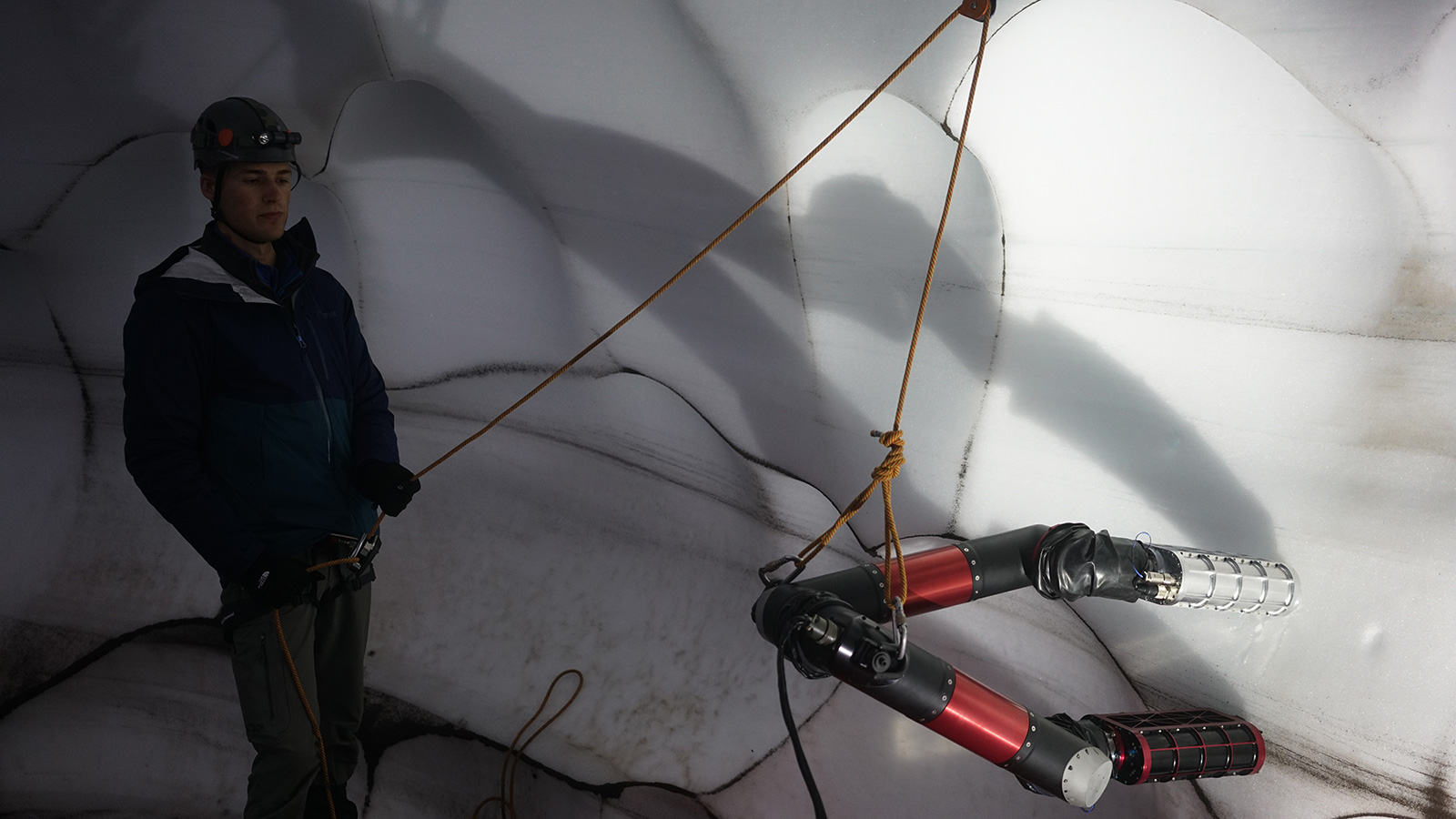Watch NASA's 'Lemur' Robot Climb a Cliff in Death Valley as Practice for Mars
While the Curiosity rover is adept, it can't climb walls or scale the polar caps on Mars. To push the capabilities of crewless rovers on the Red Planet, NASA's Jet Propulsion Laboratory (JPL) is developing some far out concepts for climbing robots that could explore hard-to-reach points on other worlds.
JPL's Limbed Excursion Mechanical Utility Robot (LEMUR) was originally designed to do repairs on the International Space Station. And, while that repair program is no longer around, engineers continue to test the robot and use their experiences with LEMUR to derive exploration robots for future missions on Mars or on far-off moons.
In early 2019, LEMUR made it up steep walls during a field test in Death Valley, California. It scaled a cliff using tiny fishhooks embedded in each of its 16 "fingers." While en route, the robot also searched for ancient fossils to simulate searching for life on distant worlds.
Related: Red Planet Express: 10 Ways Robots Move on Mars
LEMUR has so far inspired five other robots for future space exploration:





- JPL is developing various micro-climbers, tiny bots that are small enough to fit in a coat pocket but also very strong. They can climb up walls and even survive falls of 9 feet (3 meters). Some use fishhook grippers for climbing, while others use "gecko adhesive" — microscopic angled hairs that attach the robot to its climbing surface using "sticky" atomic forces. To make these atomic forces stronger, the robots even have hybrid wheels that stick to walls using electrical charges.
- The Underwater Gripper, another adaptation of one of LEMUR's gripping "hands," is great if you need a bot to swim while attaching to a surface.It uses fishhooks and "fingers" to grasp on to surfaces in underwater environments. It's been tested on the underwater vessel Nautilus off the coast of Hawaii, searching for ocean samples more than 1 mile (1.6 km) beneath the surface.
- How about flying? JPL is developing a solar-powered helicopter to travel to the Red Planet with the Mars 2020 rover. JPL engineer Arash Kalantari wants to allow future flying robots to land on a cliffside, much like birds do. "The perching mechanism is adapted from LEMUR's design: It has clawed feet with embedded fishhooks that grip rock much like a bird clings to a branch," JPL said in the statement. "While there, the robot would recharge its batteries via solar panels, giving it the freedom to roam and search for evidence of life."
- NASA Planning August Release of Mars Robotic Exploration Architecture
- Curiosity Rover Documentary Details Mars Robot's Science Discoveries
- Huge Mars Robot Armed With Laser, Cameras, Curiosity (Infographic)
Follow Elizabeth Howell on Twitter @howellspace. Follow us on Twitter @Spacedotcom and on Facebook.
Get the Space.com Newsletter
Breaking space news, the latest updates on rocket launches, skywatching events and more!
Join our Space Forums to keep talking space on the latest missions, night sky and more! And if you have a news tip, correction or comment, let us know at: community@space.com.

Elizabeth Howell (she/her), Ph.D., was a staff writer in the spaceflight channel between 2022 and 2024 specializing in Canadian space news. She was contributing writer for Space.com for 10 years from 2012 to 2024. Elizabeth's reporting includes multiple exclusives with the White House, leading world coverage about a lost-and-found space tomato on the International Space Station, witnessing five human spaceflight launches on two continents, flying parabolic, working inside a spacesuit, and participating in a simulated Mars mission. Her latest book, "Why Am I Taller?" (ECW Press, 2022) is co-written with astronaut Dave Williams.
